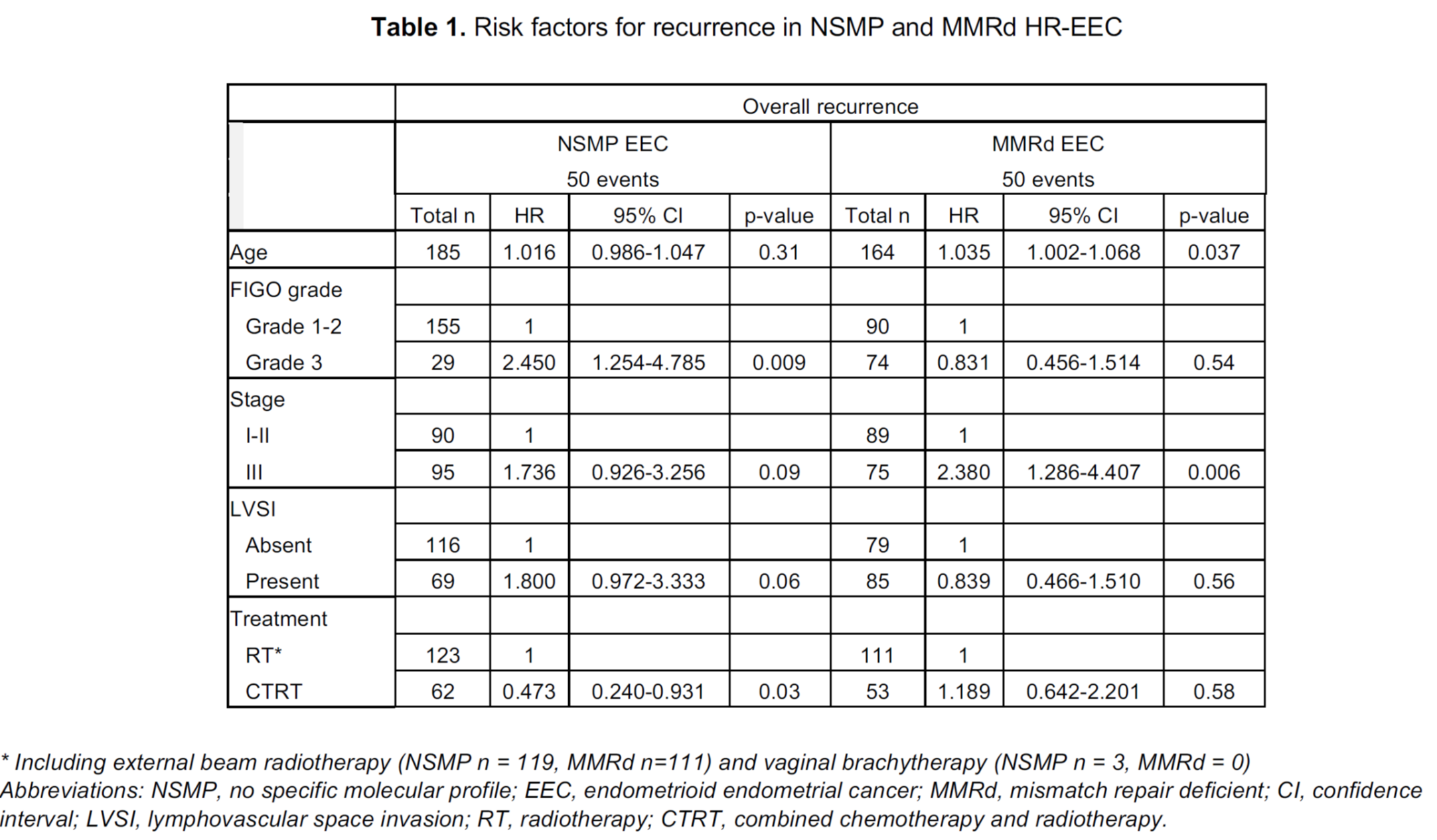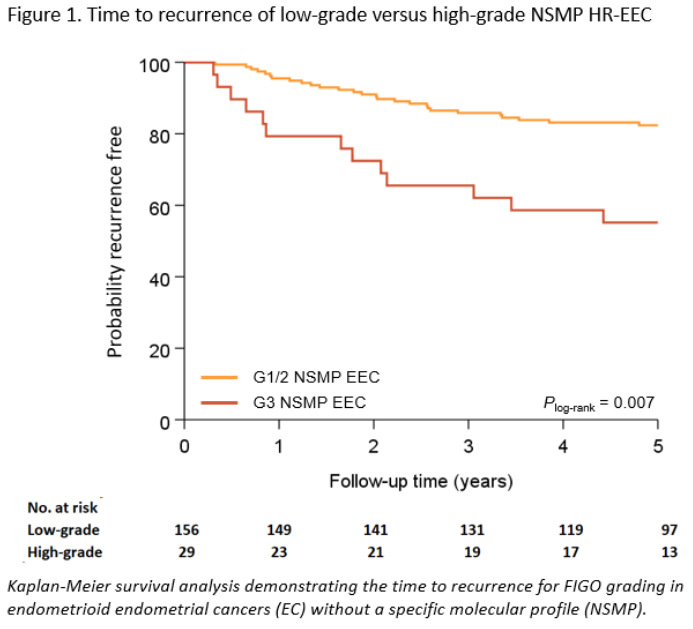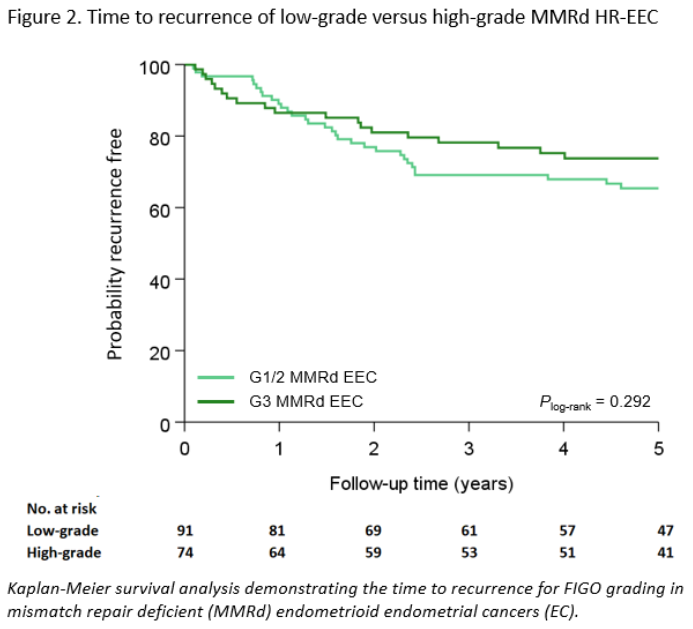|
---------------------------- 2022 Platform Presentation Winner (shared) --------------------------
[783] Prognostic Relevance of FIGO Grading is Limited to NSMP Endometrial Carcinomas
Lisa Vermij, Jan Jobsen, Mariel Brinkhuis, Suzan Roothaan, Alicia León del Castillo, Naveena Singh, Linda Mileshkin, Melanie Powell, Prafull Ghatage, C. Meg Mclachlin, Alexandra Leary, Catherine Genestie, Hans
Nijman, Harry Hollema, Ina Jürgenliemk-Schulz, Remi Nout, Vincent Smit, Stephanie de Boer, Carien Creutzberg, Nanda Horeweg, Tjalling Bosse
Background: FIGO grading of endometrioid-type endometrial cancers (EEC) is considered standard clinical practice. However, with the incorporation of the EC molecular classification in the risk-assessment of EC patients, the role of FIGO grading is increasingly debated. In this study we assessed the prognostic value of FIGO grading in molecularly classified high-risk EC (HREC).
Design: A total of 680 HREC of consenting patients from the PORTEC-3 clinical trial (n=424), and a prospective clinical cohort from Medisch Spectrum Twente in the Netherlands (n=256), were used for this study. Targeted DNA-sequencing for pathogenic POLE-exonuclease domain mutations and immunohistochemistry for p53 and mismatch repair (MMR) proteins were used to molecularly classify EC following the 2020 WHO diagnostic algorithm (POLE-mutated [POLEmut], mismatch repair deficient [MMRd], no specific molecular profile [NSMP] and p53-abnormal [p53abn] EC). Central review of histologic subtype and binary FIGO grading was performed, and non-endometrioid EC were excluded from further analyses. The Kaplan-Meier method, log-rank test and prespecified multivariable Cox proportional-hazard models were used for the assessment of time to overall recurrence by molecular subgroup and FIGO grade.
Results: In total, 442 EEC were identified, including 261 (59.0%) low-grade (grade 1-2) and 181 (41.0%) high-grade (grade 3) EEC. POLEmut and p53abn EEC were predominantly high-grade (n=40/46, 87.0% and n=38/45, 84.4%, respectively), while NSMP EC were mostly low-grade (n=157/186, 84.4%). Within MMRd EEC there was an equal distribution between low- and high-grade (n=91/165, 55.2% and n=74/165, 44.8%, respectively). 5-year overall recurrence rate was significantly lower for patients with high grade NSMP EEC (82.4% versus 55.2%; p = 0.007; figure 1). Both low- and high-grade POLEmut EEC were associated with an excellent prognosis, and p53abn EEC had a poor prognosis regardless of grade. High-grade MMRd EEC had a slightly lower risk of recurrence than low-grade MMRd EEC, but this did not reach statistical significance (figure 2). Multivariable analysis confirmed independent unfavorable prognostic impact of high grade within NSMP EEC, but not in MMRd EEC (table 1).



Conclusions: FIGO grading showed independent prognostic value in high-risk NSMP EEC, but not in POLEmut, MMRd or p53abn EEC. Future studies should clarify whether this holds up in (low-)intermediate-risk EEC. Our findings further support the use of the molecular classification.
|